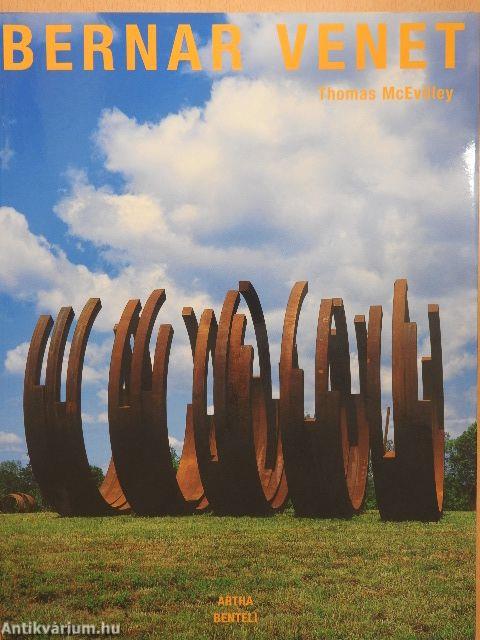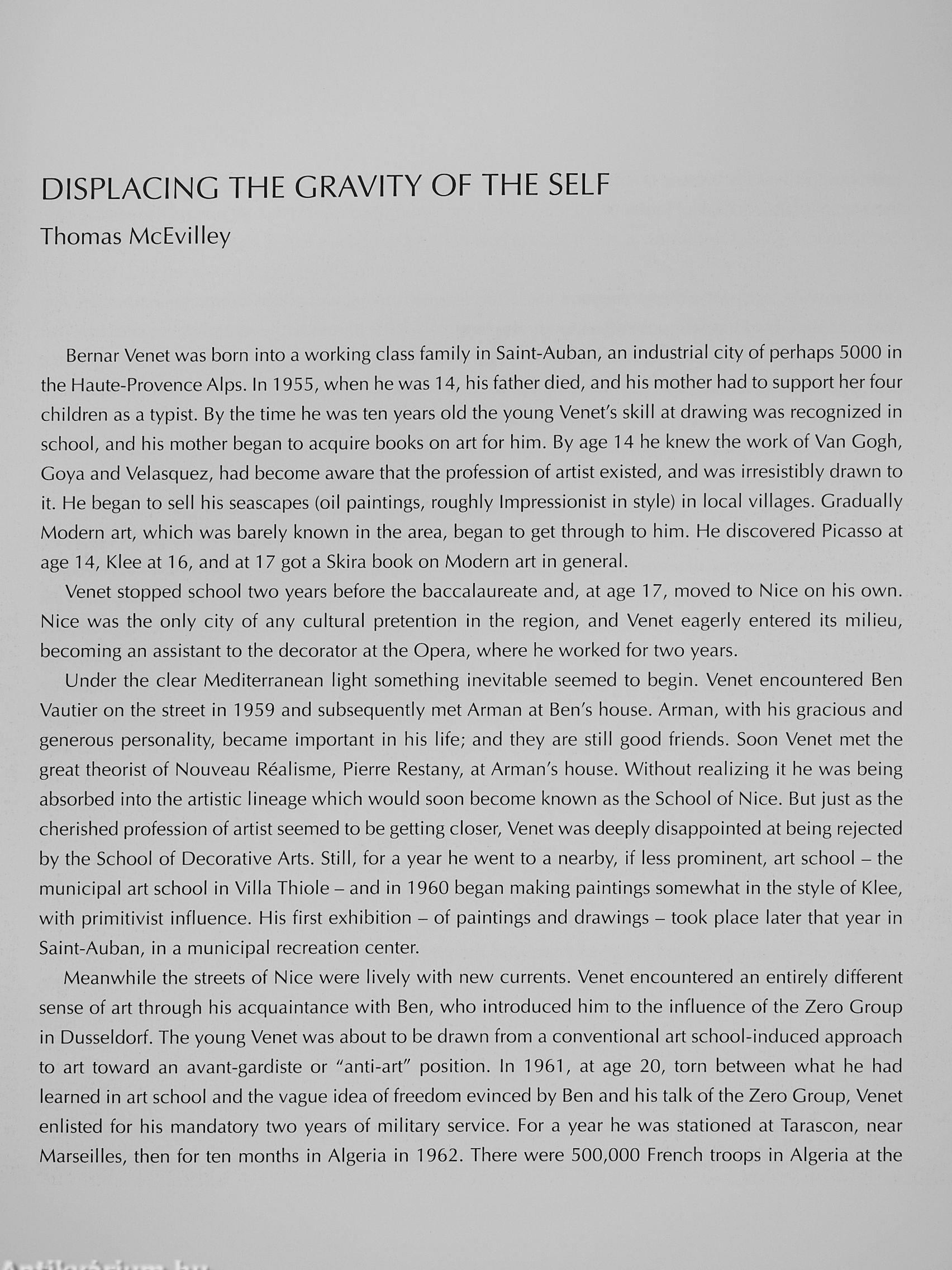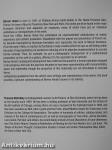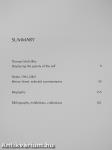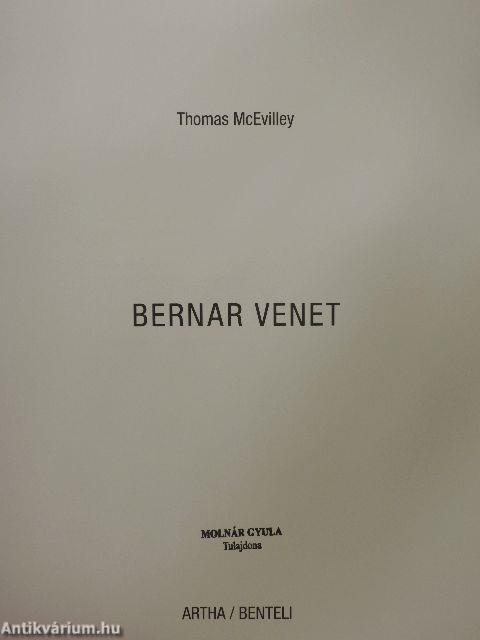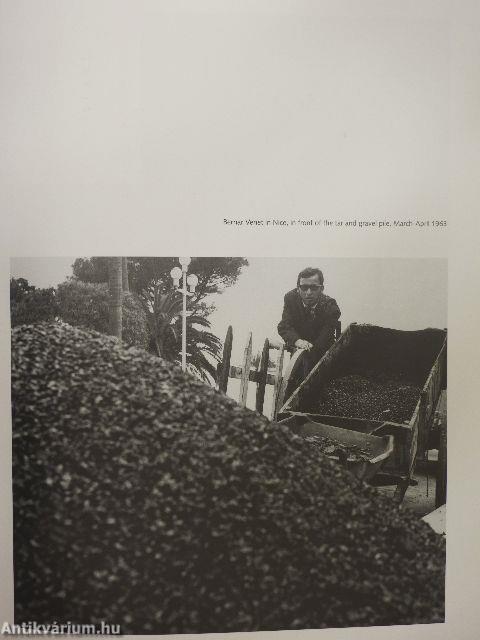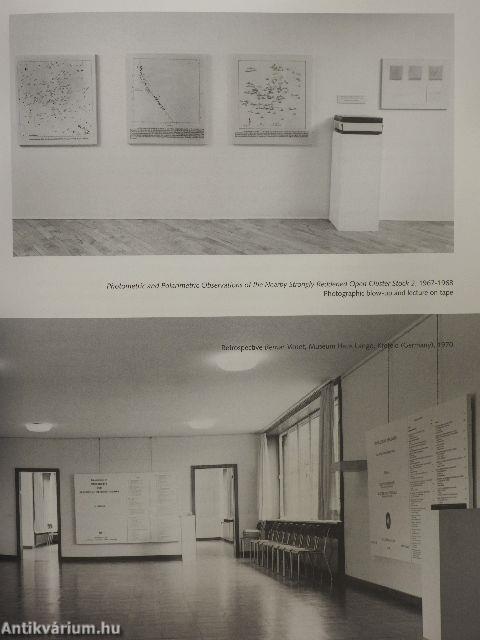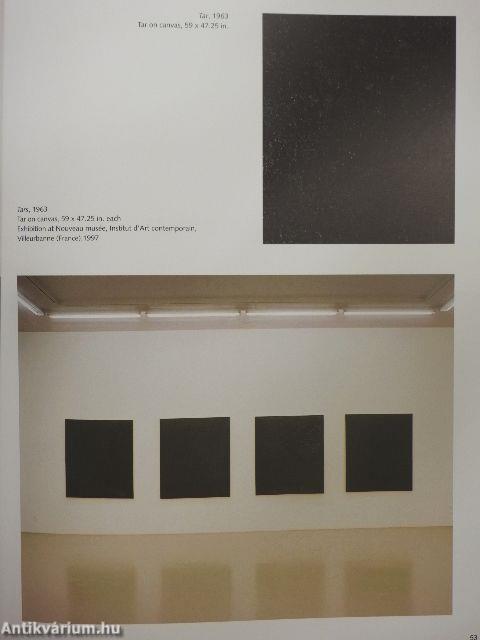1.117.994
kiadvánnyal nyújtjuk Magyarország legnagyobb antikvár könyv-kínálatát
Bernar Venet
| Kiadó: | Artha Publishers-Benteli Verlags |
|---|---|
| Kiadás helye: | Lyon-Bern |
| Kiadás éve: | |
| Kötés típusa: | Varrott papírkötés |
| Oldalszám: | 165 oldal |
| Sorozatcím: | |
| Kötetszám: | |
| Nyelv: | Angol |
| Méret: | 31 cm x 24 cm |
| ISBN: | 2-84845-006-1 |
| Megjegyzés: | Színes és fekete-fehér fotókkal. |
naponta értesítjük a beérkező friss
kiadványokról
naponta értesítjük a beérkező friss
kiadványokról
Előszó
TovábbFülszöveg
Bernar Venet is born in 1941 at Château-Arnoux-Saint-Auban in the Haute-Provence Alps, France. He lives in Muy (in Provence), New York and Pahs. His works are to be found in the major European, American and Japanese art museums, many of which have put on individual exhibitions or retrospectives of his work.
Since the 1960s, Bernar Venet has undertaken an unprecedented radicalization of artistic experience and esthetic production. Dissatisfied with the played-out conventions of French art, he became fascinated by American formalism and, especially, the work of Marcel Duchamp. From the early 1960s, in reaction to Duchamp's ready-mades (which he saw as still falling within the order of representation), he worked on reducing art in its objective implementation to a purely formal concept. Thus, for example, he put a photographic enlargement of a mathematical proposition on the wall of a gallery, offering it to the spectator as an artwork. Bernar Venet's subsequent development has... Tovább
Fülszöveg
Bernar Venet is born in 1941 at Château-Arnoux-Saint-Auban in the Haute-Provence Alps, France. He lives in Muy (in Provence), New York and Pahs. His works are to be found in the major European, American and Japanese art museums, many of which have put on individual exhibitions or retrospectives of his work.
Since the 1960s, Bernar Venet has undertaken an unprecedented radicalization of artistic experience and esthetic production. Dissatisfied with the played-out conventions of French art, he became fascinated by American formalism and, especially, the work of Marcel Duchamp. From the early 1960s, in reaction to Duchamp's ready-mades (which he saw as still falling within the order of representation), he worked on reducing art in its objective implementation to a purely formal concept. Thus, for example, he put a photographic enlargement of a mathematical proposition on the wall of a gallery, offering it to the spectator as an artwork. Bernar Venet's subsequent development has confirmed his quest for a formal radicalism stripped of all polysemy. And over the past two decades he has been experimenting with monumentality, space and materiality, though the properties of this materiality are not articulated in concrete forms.
Juxtaposing quotations from the artist's own writings and reproductions of his works, this book provides a genuine understanding of Bernar Venet's oeuvre in its entirety.
Thomas McEvilley is Distinguished Lecturer in Art History at Rice University, where he has been on the faculty since 1969. He has been a visiting professor at Yale University and the School of the Art Institute of Chicago, among others. He was a recipient of the Fulbright Grant in 1993, and has been awarded an NBA critic's grant and the Frank Jewett Mather Award for Distinction in Art Criticism by the College Art Association. The author of hundreds of articles, catalog essays, and reviews in the field of contemporary art, as well as monographs on Yves Klein, Jannis Kounellis, Leon Golub, Pat Steir, and others, his recent books include Art and Discontent, Art and Otherness, and The Exile's Return: Toward a Redefinition of Painting for the Post-l\/lodern Era. Last book: The Shape of Ancient Thought: Comparative Studies in Greek and Indian Philosophies (May 2002). He lives in New York City. Vissza
Témakörök
- Idegennyelv > Idegennyelvű könyvek > Angol > Művészetek > Szobrászat
- Művészetek > Szobrászat > Korszakok > Kortárs
- Művészetek > Szobrászat > Idegen nyelv > Angol
- Művészetek > Szobrászat > Összefoglalók > Külföldi
- Művészetek > Szobrászat > Albumok > Külföldi
- Művészetek > Szobrászat > Albumok > Tematikus


